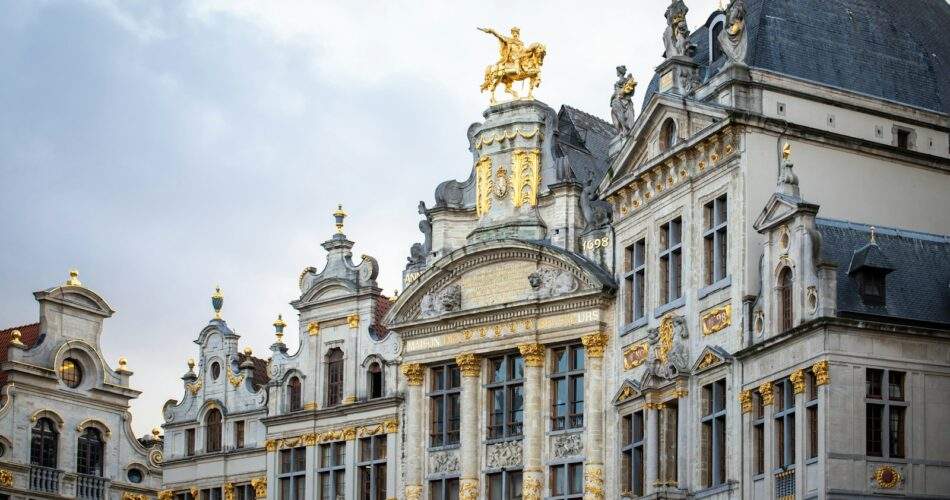Brussels doesn’t announce itself with monuments that pierce the skyline or coastlines that stop you in your tracks. Instead, Belgium’s capital reveals itself in layers—through the golden light filtering into Art Nouveau staircases, in the sharp wit of comic book murals lining residential streets, and in the serious pleasure locals take in a perfectly poured beer at three in the afternoon. This is a city built on contradictions: simultaneously the bureaucratic heart of Europe and a place where neighborhood chocolatiers still wrap bonbons by hand, where medieval squares transition seamlessly into brutalist EU complexes, where both French and Flemish are spoken but neither side will admit the other does it better. Brussels asks you to slow down, to notice, to appreciate craftsmanship over spectacle—and rewards those who do with an authenticity that flashier European capitals have long since traded away.
Planning your visit around the seasons makes a substantial difference here. Spring, particularly April and May, brings Brussels to life as café terraces reopen and locals emerge from their winter hibernation. The weather remains unpredictable—pack layers and an umbrella regardless of the forecast—but the city’s parks bloom magnificently, and you’ll find smaller crowds at major attractions. Summer delivers the longest days and warmest temperatures, though “warm” is relative; expect highs around 22-24°C with frequent drizzle. July and August see an influx of European tourists, but many Bruxellois leave the city entirely, giving certain neighborhoods an almost sleepy quality. The Ommegang pageant in early July transforms the Grand Place into a medieval spectacle worth scheduling around.
Autumn might be Brussels’ finest season. September and October offer mild weather, dramatic skies perfect for photography, and the return of cultural programming after the summer pause. The Brussels Beer Weekend in early September draws serious beer enthusiasts, while October brings fewer tourists and lower accommodation prices. Winter is dark and damp, with sunset arriving before 5 PM in December, but the Christmas markets throughout the city center create genuine atmosphere—unlike some European markets that feel manufactured for tourists. Just avoid the dead weeks between New Year’s and late January, when many restaurants close and the weather turns genuinely miserable.
The Grand Place remains Brussels’ magnetic center, and rightly so—Victor Hugo called it the most beautiful square in Europe, and the guildhalls surrounding it genuinely deserve their UNESCO status. But resist the urge to tick it off your list and move on. Return at different times of day to watch how light transforms the gilded facades, and use it as a launching point into the Îlots Sacrés, the tangle of medieval streets where you’ll find both tourist traps and generations-old establishments side by side.
The comic book murals scattered throughout the city tell you something essential about Brussels—this is a place that takes playfulness seriously. Follow the Comic Book Route through neighborhoods like Laeken and Marolles to see walls transformed into scenes from Tintin, Lucky Luke, and lesser-known Belgian comics. While you’re in Marolles, the working-class neighborhood climbing up toward the Palace of Justice, explore Place du Jeu de Balle’s daily flea market and notice how this district remains stubbornly authentic despite encroaching gentrification.
Brussels’ Art Nouveau heritage deserves careful attention. The Horta Museum, housed in architect Victor Horta’s former home, demonstrates how the style revolutionized domestic space. But the real discovery happens when you simply wander through neighborhoods like Ixelles and Saint-Gilles, where dozens of Art Nouveau buildings hide in plain sight on residential streets. The Musical Instruments Museum occupies a stunning Horta building and offers rooftop views that rival any observation deck. For something unexpected, visit the Serres Royales de Laeken—the royal greenhouses open only two weeks each spring, revealing spectacular glass and iron structures filled with exotic plants. Locals queue for hours; tourists rarely know they exist.
Belgian food culture centers on ingredients treated with respect rather than fussy technique. Moules-frites appears on nearly every menu, but the best versions come from unpretentious neighborhood spots, not Grand Place restaurants charging tourist prices. Gray shrimp croquettes, waterzooi (a creamy chicken or fish stew), and stoemp (mashed potatoes with vegetables) represent Brussels comfort food at its finest. For frites, seek out Maison Antoine near Place Jourdan—locals will tell you it’s the city’s best, and they’re not wrong.
The chocolate here transcends souvenir status. Shops like Pierre Marcolini and Laurent Gerbaud create chocolates that taste of actual cocoa, not just sugar, and watching the pralines being made connects you to the city’s artisan traditions. Belgian waffles exist in two forms—the lighter Brussels waffle and the denser Liège version—and both are best enjoyed plain or with a thin layer of chocolate, not buried under tourist-trap toppings.
Beer deserves serious attention here. With hundreds of Belgian beers available, from Trappist ales to lambics and gueuzes, places like Moeder Lambic or Delirium Café offer guidance without pretension. Each beer comes in its own specifically designed glass; this isn’t affectation but tradition.
For accommodations, consider what kind of Brussels experience you want. The area around Sainte-Catherine offers proximity to restaurants and nightlife while maintaining neighborhood character. Ixelles and Saint-Gilles attract younger travelers and have excellent transport connections while feeling residential and authentic. The European Quarter provides modern hotels but limited evening atmosphere. The Marolles puts you in the city’s grittiest, most characterful district, though it’s worth noting some streets feel rough after dark.
